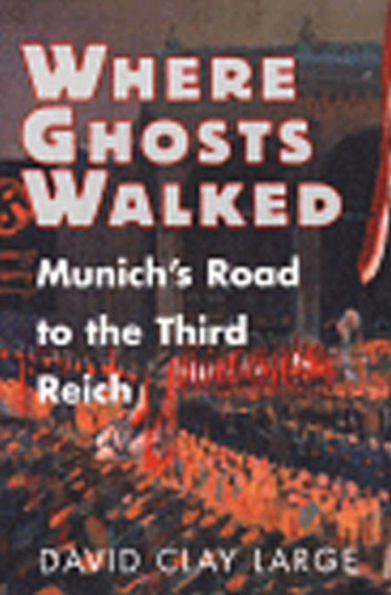Where Ghosts Walked: Munich's Road to the Third Reich
The capital of the Nazi movement was not Berlin but Munich, according to Hitler himself. In examining why, historian David Clay Large begins in Munich four decades before World War I and finds a proto-fascist cultural heritage that proved fertile soil later for Hitler's movement. An engrossing account of the time and place that launched Hitler on the road to power. Munich was the birthplace of Nazism and became the chief cultural shrine of the Third Reich. In exploring the question of why Nazism flourished in the 'Athens of the Isar', David Clay Large has written a compelling account of the cultural roots of the Nazi movement, allowing us to see that the conventional explanations for the movement's rise are not enough. Large's account begins in Munich's 'golden age', four decades before World War I, when the city's artists and writers produced some of the outstanding work of the modernist spirit. He sees a dark side to the city, a protofascist cultural heritage that would tie Adolf Hitler's movement to its soul. Large prowls his volatile world of seamy basement meeting places, finding that attacks on modernity and liberalism flourished, along with virulent anti-Semitism and German nationalism. From the violent experience of the Munich Soviet, through Hitler's failed Beer-Hall Putsch of 1923 and on to his appointment as German chancellor in 1933, Large unfurls a narrative full of insight and implication.
1124834590
Where Ghosts Walked: Munich's Road to the Third Reich
The capital of the Nazi movement was not Berlin but Munich, according to Hitler himself. In examining why, historian David Clay Large begins in Munich four decades before World War I and finds a proto-fascist cultural heritage that proved fertile soil later for Hitler's movement. An engrossing account of the time and place that launched Hitler on the road to power. Munich was the birthplace of Nazism and became the chief cultural shrine of the Third Reich. In exploring the question of why Nazism flourished in the 'Athens of the Isar', David Clay Large has written a compelling account of the cultural roots of the Nazi movement, allowing us to see that the conventional explanations for the movement's rise are not enough. Large's account begins in Munich's 'golden age', four decades before World War I, when the city's artists and writers produced some of the outstanding work of the modernist spirit. He sees a dark side to the city, a protofascist cultural heritage that would tie Adolf Hitler's movement to its soul. Large prowls his volatile world of seamy basement meeting places, finding that attacks on modernity and liberalism flourished, along with virulent anti-Semitism and German nationalism. From the violent experience of the Munich Soviet, through Hitler's failed Beer-Hall Putsch of 1923 and on to his appointment as German chancellor in 1933, Large unfurls a narrative full of insight and implication.
52.0
In Stock
5
1

Where Ghosts Walked: Munich's Road to the Third Reich
436
Where Ghosts Walked: Munich's Road to the Third Reich
436Hardcover(1st Edition)
$52.00
52.0
In Stock

Product Details
| ISBN-13: | 9780393038361 |
|---|---|
| Publisher: | Norton, W. W. & Company, Inc. |
| Publication date: | 10/17/1997 |
| Edition description: | 1st Edition |
| Pages: | 436 |
| Product dimensions: | 6.50(w) x 9.60(h) x 1.40(d) |
About the Author
From the B&N Reads Blog
